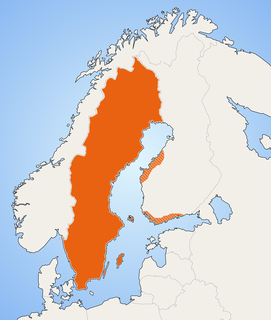
Solna Church is a so-called round church in Solna Municipality near Stockholm, Sweden. The church is located on the headland between Brunnsviken and Ulvsundasjön, at the southern end of the cemetery Norra begravningsplatsen. The oldest parts of the church are from the later 12th century, a Romanesque fortress church built in stone.
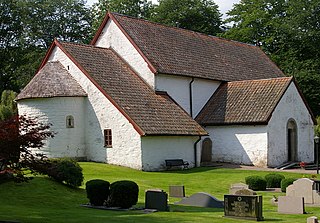
Gökhem Church is a medieval Lutheran church built in the Romanesque style. Located some 12 km (7.5 mi) west of Falköping in Västra Götaland County, Sweden, it belongs to the Diocese of Skara. One of Sweden's oldest stone churches, it is noted for its well-preserved 15th-century frescos, possibly the work of Master Amund.

Vaksala Church is a medieval Lutheran church in the Archdiocese of Uppsala in Uppsala, Sweden. The church is considered one of the most unusual in the province of Uppland.

Munsö Church is a medieval Lutheran church in the Diocese of Stockholm. Its site, Munsö, is a village and formerly an island in Ekerö Municipality, Sweden. Because of post-glacial rebound, this island in Lake Mälaren is now connected to the island Ekerö. Munsö Church lies not far from Väsby hage Nature Reserve. The round church at Munsö is one of a few so-called round churches in Sweden.

Bottnaryd Church is a historic church building in Bottnaryd, Sweden. It is located in Jönköping Municipality, Jönköping County, Sweden. The church is situated next to the lake Gårdsjön.
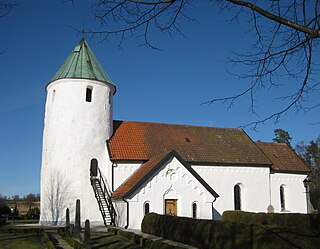
Hammarlunda Church is a medieval Lutheran church in the province of Scania, Sweden. It belongs to the Diocese of Lund.

Stora Råby Church is a medieval Lutheran church outside Lund in the province of Scania, Sweden. It belongs to the Diocese of Lund.
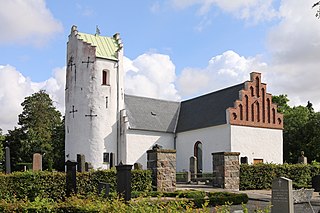
Hammarlöv Church is a medieval Lutheran church in the province of Scania, Sweden. It belongs to the Diocese of Lund.

Magra Church is a church in Alingsås, Västergötland, Sweden. The small church building belongs to the parish of Bjärke, in the Diocese of Skara. The church was built sometime in the Middle Ages, probably in the 12th century. The pulpit was made in 1650, and its figurines were made 1693. In 1963, a large detached section was added in the southeast.
Stora Mellby Church is a church in Stora Mellby, Alingsås Municipality, Västergötland, Sweden. It belongs to the parish of Bjärke, in the Diocese of Skara.
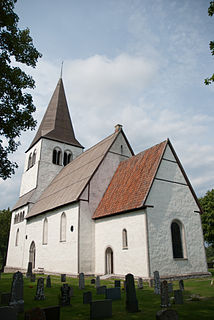
Rute Church is a medieval Lutheran church in Rute on the Swedish island Gotland, in the Baltic Sea. It belongs to the Diocese of Visby.

Sanda Church is a medieval Lutheran church on the island of Gotland, Sweden. It belongs to the Diocese of Visby.

Sjonhem Church is a medieval Lutheran church on the island of Gotland, Sweden. It belongs to the Diocese of Visby.

Bonderup Church is a medieval Lutheran church in the province of Scania, Sweden. It belongs to the Diocese of Lund.
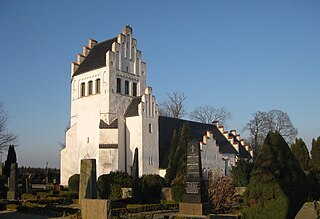
Hardeberga Church is a medieval Lutheran church in the province of Scania, Sweden. It belongs to the Diocese of Lund.
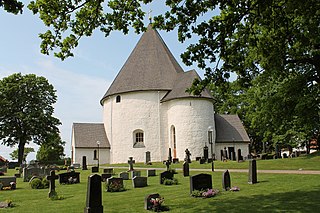
Hagby Church is a medieval round church in Hagby, Kalmar County in Sweden. It belongs to the Diocese of Växjö.
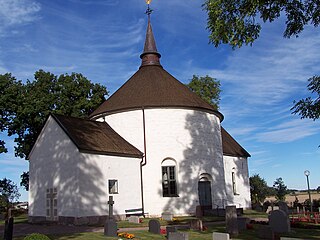
Voxtorp Church is a medieval round church in Kalmar County in Sweden. It belongs to the Diocese of Växjö.

Ununge Church is a medieval church belonging to the Church of Sweden in the Diocese of Uppsala.

Biskopskulla Church is a medieval church in the Archdiocese of Uppsala in Uppsala County, Sweden.

Fulltofta Church is a medieval church in Fulltofta, in Hörby Municipality in the province of Skåne, Sweden. It belongs to the Diocese of Lund. During the Middle Ages, the church was a local pilgrimage site for the veneration of Magnhild of Fulltofta. It contains a large number of medieval frescos, uncovered during a restoration of the church in the early 20th century.

